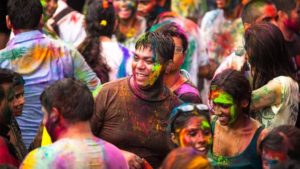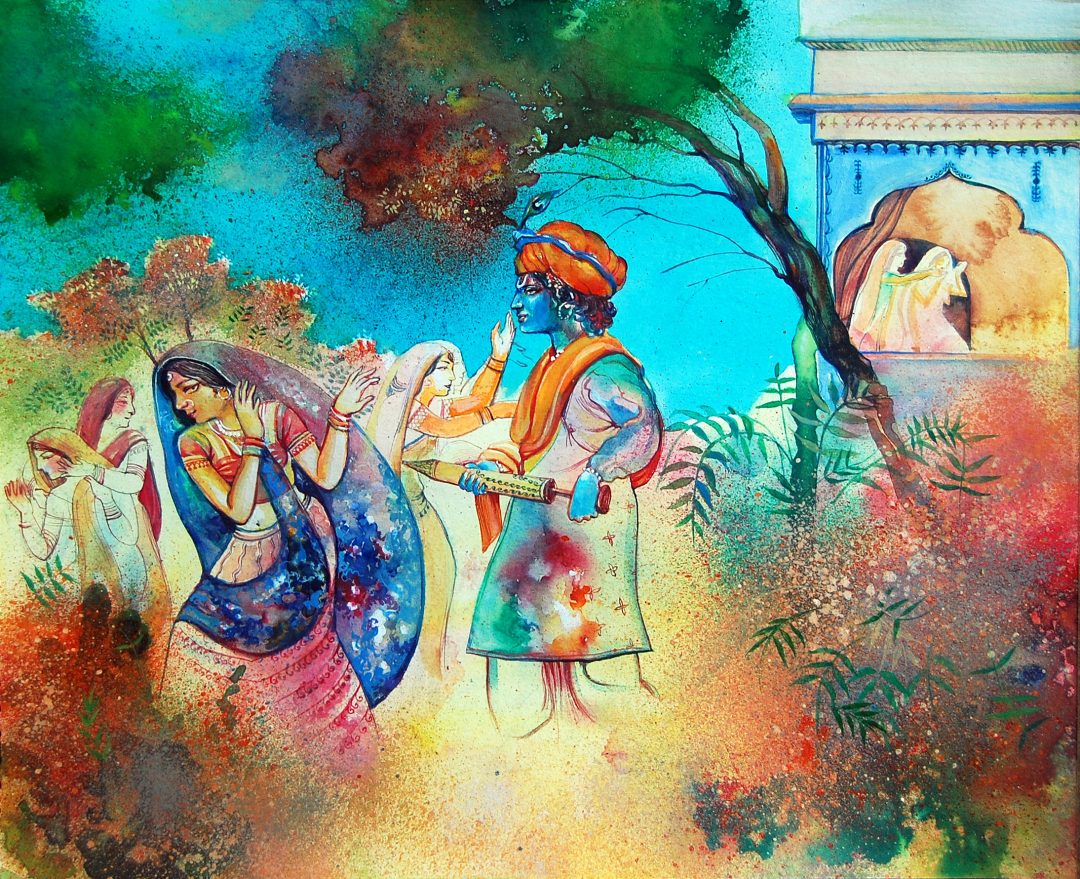HOLI
Holi is a popular Hindu festival, known as “the festival of colors“. Holi is also called Phagwah, derived from the word Phalgun, the month of the full moon. Holi is always celebrated on the day after the full moon in early February or early March. Holi is also known as “Vasant Mahotsava” and “Kama Mahotsava”.
 Holi celebrates the bringing in of the new Harvest, and celebrates the fertility of the land. On the day of Holi, people have the opportunity to vent out their emotions and to physically relax. There is a type of “Shudra atmosphere” where people let loose, shout out their true feelings to each other and the next day, all is forgotten and forgiven. Anyone can get away with practically anything by just saying “Bura na Mano, Holi Hai!), “Don’t Mind, Its Holi!
Holi celebrates the bringing in of the new Harvest, and celebrates the fertility of the land. On the day of Holi, people have the opportunity to vent out their emotions and to physically relax. There is a type of “Shudra atmosphere” where people let loose, shout out their true feelings to each other and the next day, all is forgotten and forgiven. Anyone can get away with practically anything by just saying “Bura na Mano, Holi Hai!), “Don’t Mind, Its Holi!
Holi is one of the oldest celebrated holidays in history. In Vijayanagar, in a temple at Hampi there is a 16th c panel sculpted in a temple which shows a joyous scene depicting Holi where a prince and princess are standing amidst maids waiting with syringes or pichkaris to drench the royal couple in the colored water.
MYTHOLOGY:
There are many mythological stories associated with Holi. The most well-known is the story of Holika-Hiranyakashipu and Prahlad. This tale of Holi has to do with a demoness, Holika. Holika was the sister of King Hiranyakashipu. He ruled over the land and forced everyone to obey him. His son, Prahlad did not want to worship his father. He wanted to worship Lord Vishnu instead.
Hiranyakashipu was outraged and furious. He ordered his sister, Holika to kill Prahlad. Holika had a gift from birth. She could walk through fire untouched. So, she decided to kill Prahlad by walking into the fire with him, hoping to burn him. But Prahlad, believing in Lord Vishnu, prayed to Vishnu while Holika took him into the fire. Prahlad was saved and Holika was burnt. Holika did not know that her gift only held true if she walked into the fire alone. If she walked into the fire with someone, she would be killed. The Gods saved Prahlad for worshiping them.
In celebration of God’s powers, Holi is celebrated in 3 days.
THREE DAYS OF HOLI
1. FULL MOOM (HOLI PURNIMA)
On the first day, colored powders are placed on a thali or platter and a lota or small brass pot is brought with colored water. The eldest male member of the family begins the ceremony by sprinkling colors on each member of the family.
2. PUNO
On the second day, images of Hoika are burnt to keep with the Prahlad legend and his devotion to Vishnu. Huge bonfires are lighted and people gather near the fire and fill the air with song and dance. Mothers carry their babies five times in a clockwise direction around the fire, so that her children are blessed by Agni, the god of fire.
3. PARVA
Finally, on the third day, families and friends visit each other’s homes and color and gulal are thrown into the air and smeared on each other’s faces and bodies. Pichkaris and water balloons are filled with colors and squirted at people. Color is also smeared on the deities, especially Krishna and Radha.
While playing with colors during Holi make sure that the colors used are safe and nonhazardous to the skin and to the environment.
Most of the Holi colors sold are oxidized metals or dye mixed with engine oil.
 Red: Mercury Sulphite (skin cancer)
Red: Mercury Sulphite (skin cancer)
Green: Copper sulfate(allergies, temporary blindness)
Purple: Chromium iodide (bronchial asthma, allergies)
Silver: Aluminum bromide (carcinogenic)
Black: Lead Oxide (Renal failure, learning disabilities)
Shiny colors: Powdered glass added to colors.
Any of these can result in skin allergies, eye irritation, and even blindness. After the colors are washed off they cause increased pollution in the environment.
Play holi safely. You can make colored water or colored powder at home, and with safe ingredients.
HOLI POWDER:
For dry powder, use red sandalwood powder, which has a beautiful red color, which is beneficial to the skin. Also, Red Hibiscus flowers has a vibrant color. Sinduria, is a fruit that has a bright brick color.
COLORED WATER:
For colored water, use two teaspoons of red sandalwood powder in 5 liters of boiling water. This can be diluted in 20 liters of water. The Peels of red Pomegranate can be boiled to yield a lovely red color. Red can be obtained from the juice of tomatoes and carrots, and then diluted with water.






